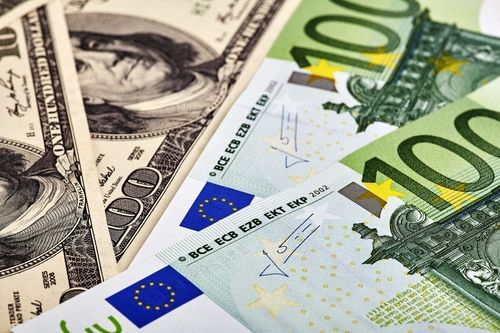EUR/USD slumps to 1.0200 neighborhood, multi-week low on Trump’s trade tariffs

EUR/USD kicks off the new week on a bearish note amid resurgent USD demand.
Trump imposed tariffs on Canada, Mexico, and China, boosting the safe-haven buck.
The divergent ECB-Fed outlook also contributes to the downfall and favors bears.
The EUR/USD pair attracts heavy follow-through selling on Monday and dives to the 1.0200 neighborhood, or a three-week low during the early Asian session. Spot prices have now moved back closer to over a two-year low touched in January and seem vulnerable to prolonging a multi-month-old downtrend.
The US Dollar (USD) surges across the board in reaction to US President Donald Trump's decision over the weekend to impose 25% duties against Canada and Mexico, and an additional 10% duty on China. This marks the start of a new global trade war and tempers investors' appetite for riskier assets. The anti-risk flow provides a goodish lift to the safe-haven buck, which turns out to be a key factor that exerts downward pressure on the EUR/USD pair.
Meanwhile, Trump announced on Friday evening that he would slap tariffs on goods from the European Union. This comes on top of the European Central Bank's (ECB) dovish stance, which continues to undermine the shared currency and contributes to the offered tone surrounding the EUR/USD pair. In fact, the ECB lowered borrowing costs by 25 basis points (bps) last Thursday, as expected, and left the door open for more rate cuts by the end of this year.
This marks a big divergence in comparison to the Federal Reserve's (Fed) hawkish pause, which favors the USD bulls and supports prospects for a further depreciating move for the EUR/USD pair. That said, the recent sharp pullback in the US Treasury bond yields acts as a headwind for the buck and could offer some support to spot prices. Nevertheless, the fundamental backdrop suggests that the path of least resistance for spot prices is to the downside.
Tariffs FAQs
Tariffs are customs duties levied on certain merchandise imports or a category of products. Tariffs are designed to help local producers and manufacturers be more competitive in the market by providing a price advantage over similar goods that can be imported. Tariffs are widely used as tools of protectionism, along with trade barriers and import quotas.
Although tariffs and taxes both generate government revenue to fund public goods and services, they have several distinctions. Tariffs are prepaid at the port of entry, while taxes are paid at the time of purchase. Taxes are imposed on individual taxpayers and businesses, while tariffs are paid by importers.
There are two schools of thought among economists regarding the usage of tariffs. While some argue that tariffs are necessary to protect domestic industries and address trade imbalances, others see them as a harmful tool that could potentially drive prices higher over the long term and lead to a damaging trade war by encouraging tit-for-tat tariffs.
During the run-up to the presidential election in November 2024, Donald Trump made it clear that he intends to use tariffs to support the US economy and American producers. In 2024, Mexico, China and Canada accounted for 42% of total US imports. In this period, Mexico stood out as the top exporter with $466.6 billion, according to the US Census Bureau. Hence, Trump wants to focus on these three nations when imposing tariffs. He also plans to use the revenue generated through tariffs to lower personal income taxes.
* The content presented above, whether from a third party or not, is considered as general advice only. This article should not be construed as containing investment advice, investment recommendations, an offer of or solicitation for any transactions in financial instruments.


